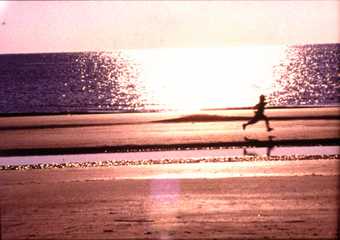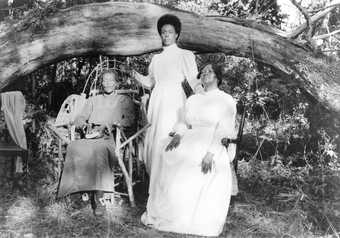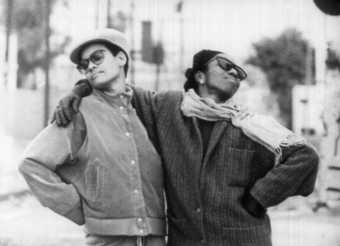Daughters of the Dust
Julie Dash, USA 1991, 35mm, colour, 112 min
Daughters of the Dust is a landmark in independent film. An enchanting visual poem, it is an impressionistic history of the Gullah people, who at the turn of the century find themselves torn between their traditions and modernity. Descendants of slaves who lived in isolation on the tropical Sea Islands off the Southern U.S. coast, the Gullah people maintained strong connections to African cultural and linguistic traditions. Focusing on the extended Peazant family in summer of 1902, the film explores the spiritual conflicts between different generations of women as they debate the consequences of their relocation to the mainland.
Working closely with cinematographer Arthur Jaffa, Dash developed a lush and experimental cinematic language to address the complexity of African culture, drawing as much on lived experiences and a history marked by trauma as it does on the interior and dream spaces of generations who lived on the islands. Told from the perspective on of an unborn child, the characters decisions are informed equally by relatives as by their many ancestors who lived on the island since the first people were brought as slaves. Deeply lyrical the film doesn't shy away from the legacy of slavery and injustice yet it seeks to celebrate the persistence of African culture and the generations of woman who have and continue to act as its custodians. The first feature film released commercially in the US by an African-American woman, Julie Dash's long cherished project is a masterpiece acting both as a historical record and a radical proposal for how African cultures and memories are rendered in cinema.
Cycles
Zeinabu Irene Davis, USA 1989, digital video, transferred from 16mm, black and white, 17 min
Drawing on Caribbean folklore, Cycles follows a woman awaiting her overdue period, who performs rituals of purification and calls on the spirt of the Orishas (deities of the Yoruba religion) for support. With a rich soundtrack combining acappella singers from Haiti and trumpetiste Clora Bryant the film playfully mixes still images and live action, an exuberant and playful celebration of sisterhood.
Introduced by artist and curator Barby Asante who will lead discussion following the screening with Chardine Taylor-Stone.
Speaker Biographies
Barby Asante is a London based artist, curator, and educator. Using film, archive, oral histories and performance Barby often works in dialogue with people to develop her projects. Her practice explores connecting global and local histories, identity, place and representation, and the cultural and social significance of this in the formation of our places. Recent projects include: Baldwin’s Nigger R E L O A D E D, Iniva, 2014; To Gypsyland (with Delaine le Bas), 198 Contemporary Arts & Learning, 2013–2014, The South London Black Music Archive, Peckham Platform and Tate Modern, 2012; and Down at the Bamboo Club, Picture This, Bristol, 2009.
Chardine Taylor-Stone is a writer, musician, DJ and activist. She was the program coordinator for Black British Feminism: Past, Present and Futures 2015 which attempted to trace black feminist legacies into the present and encourage a return to an activist centered movement. Founder of afrofuturist book club Mothership Connections, she also plays drums in Black feminist punk band Big Joanie. As a writer and feminist activist her interests include art, technology and music with a particular focus on the history of subcultures, Black women's activism, the intersections of class and queerness in Black activism and Black involvement in the esoteric, weird and downright bizarre! She is currently working on the anti-gentrification campaign Reclaim Brixton.
Programme duration: 129 min



